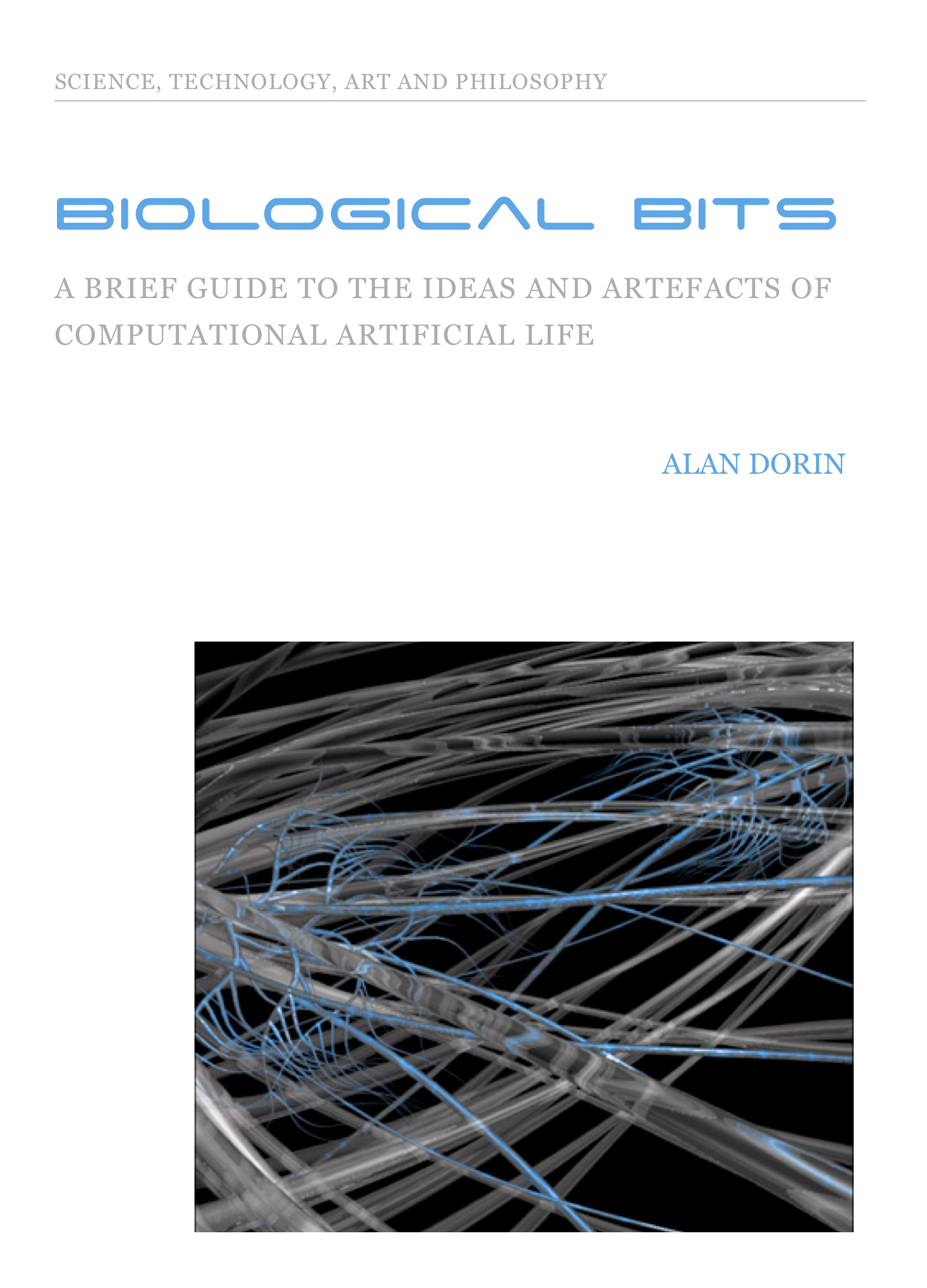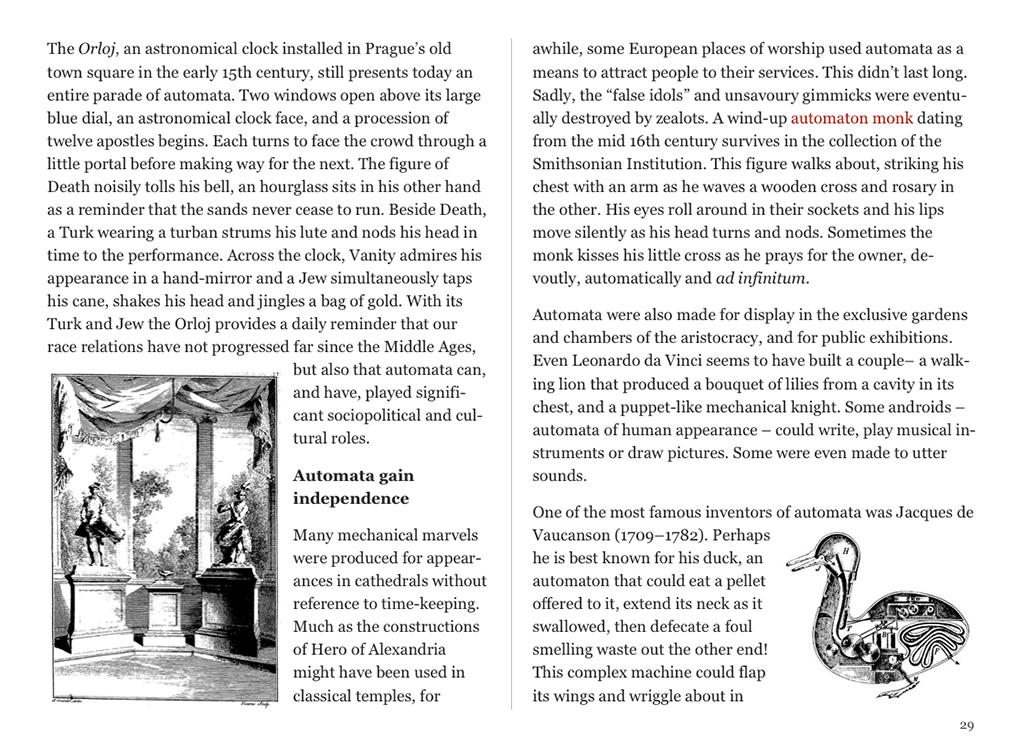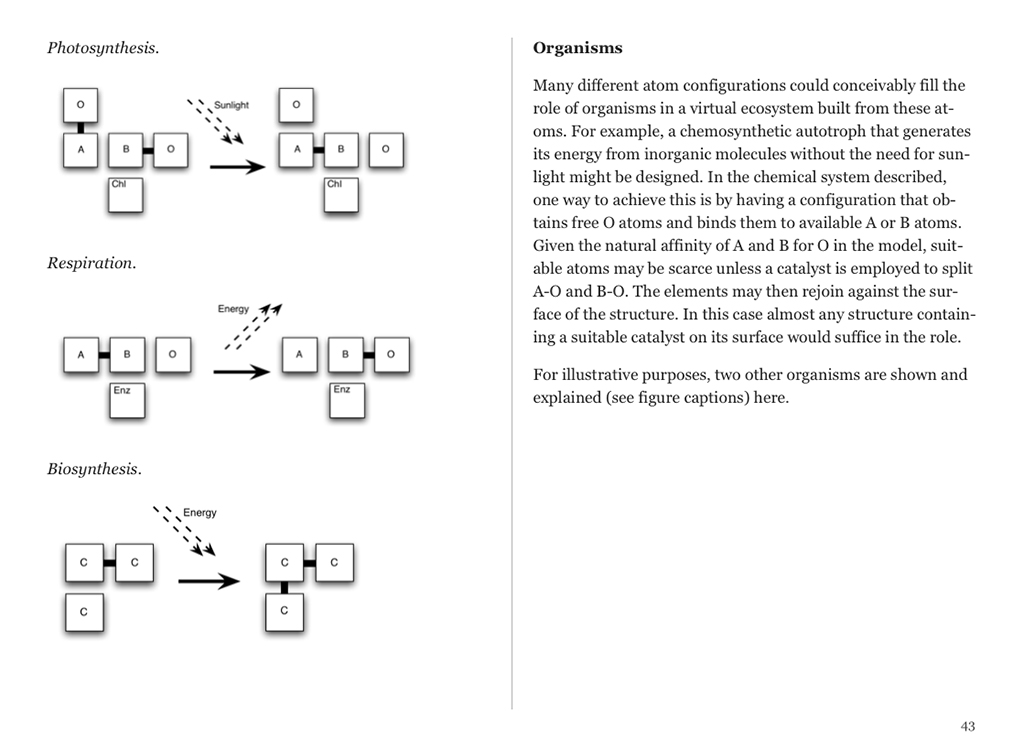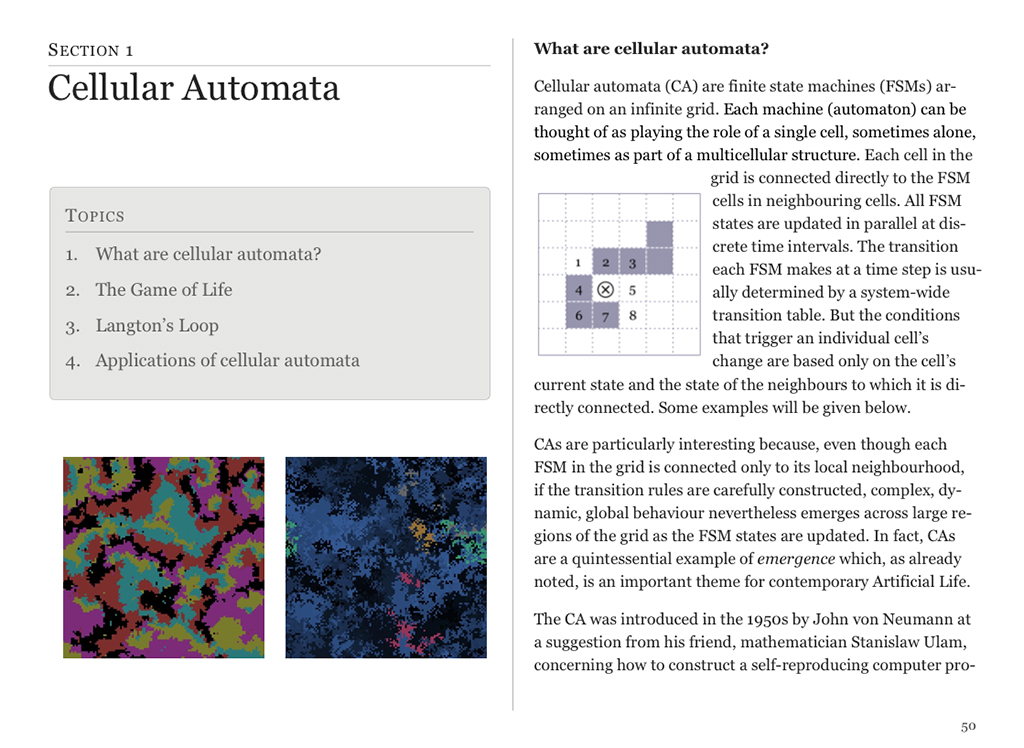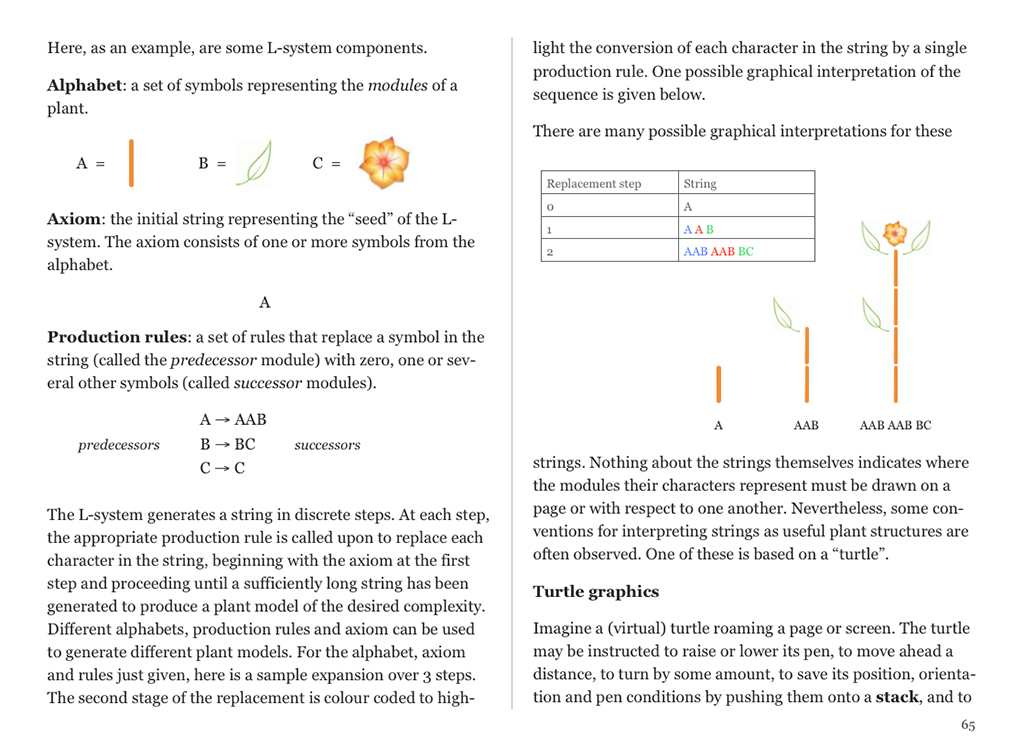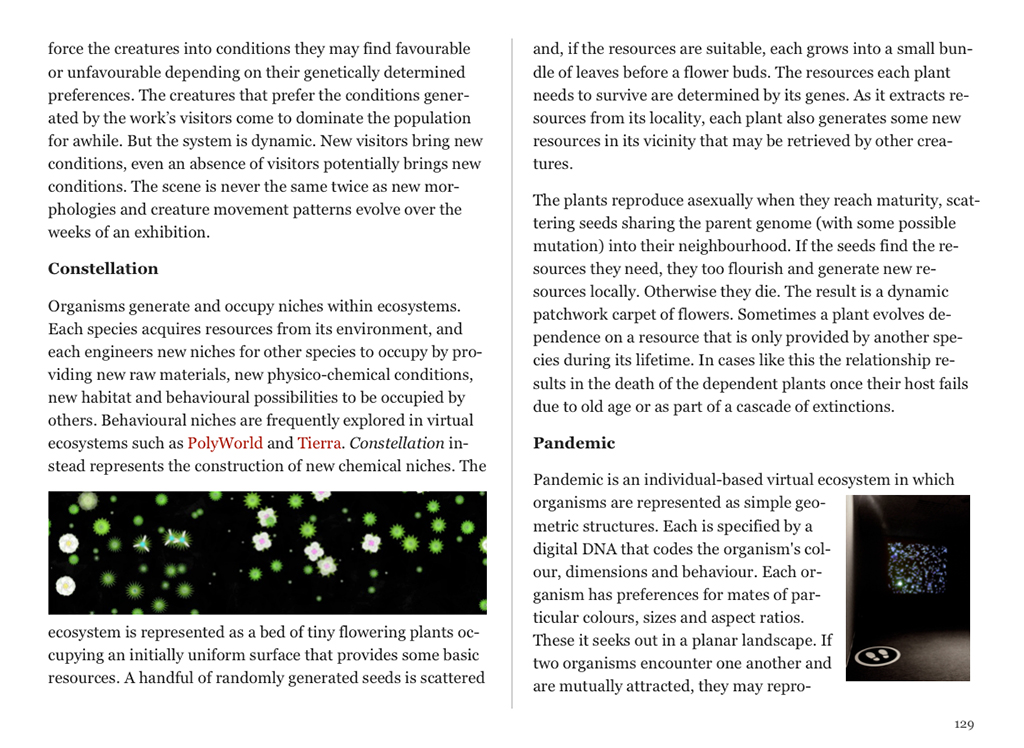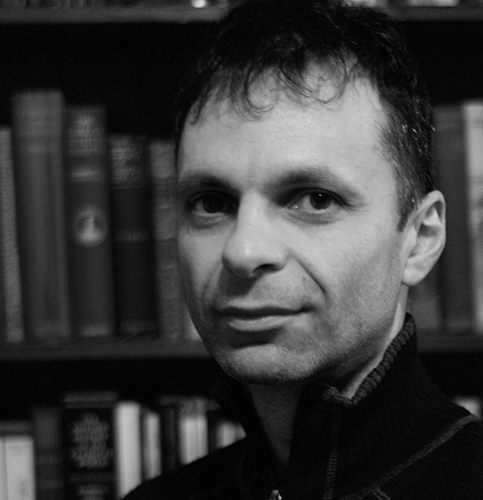Alan Dorin, Animaland, 2014
This guide provides broad coverage of computational Artificial Life, a field encompassing the theories and discoveries underpinning the invention and study of technology-based living systems. It is targetted at students of all ages who are new to Artificial Life or are hoping to gain a broad understanding of its themes.
The book focusses specifically on Artificial Life realised in computer software. Topics include:
- pre-history of Artificial Life
- artificial chemistry
- artificial cells
- organism development
- locomotion
- group behaviour
- evolution
- ecosystem simulation
AWARD WINNER: "Education and Outreach Award", The International Society for Artificial Life, Tokyo 2018
Incredibly beautiful free ebook ... on Alife, history, theory and programming - Ollie Bown; musician, electronic media artist, creativity researcher.
I believe this e-book will have a huge impact on the next generation of alifers - Hiroki Sayama; artificial life researcher.
This book covers a lot of ground in a short space, in a very interesting way. All good! - Gordon Monro; digital media artist, composer, mathematician.
...excellent free introductory book on Artificial Life – Tim Taylor, artificial life researcher.
This is a great resource which I will dip into from time to time. I’m very impressed and glad to see such a useful book available for people to use – Peter McIlwain, composer, sound designer, artist.
Biological Bits covers artificial life, virtual organisms, evolution, etc. Good stuff for #gamedev! - Ben Porter; game developer.
